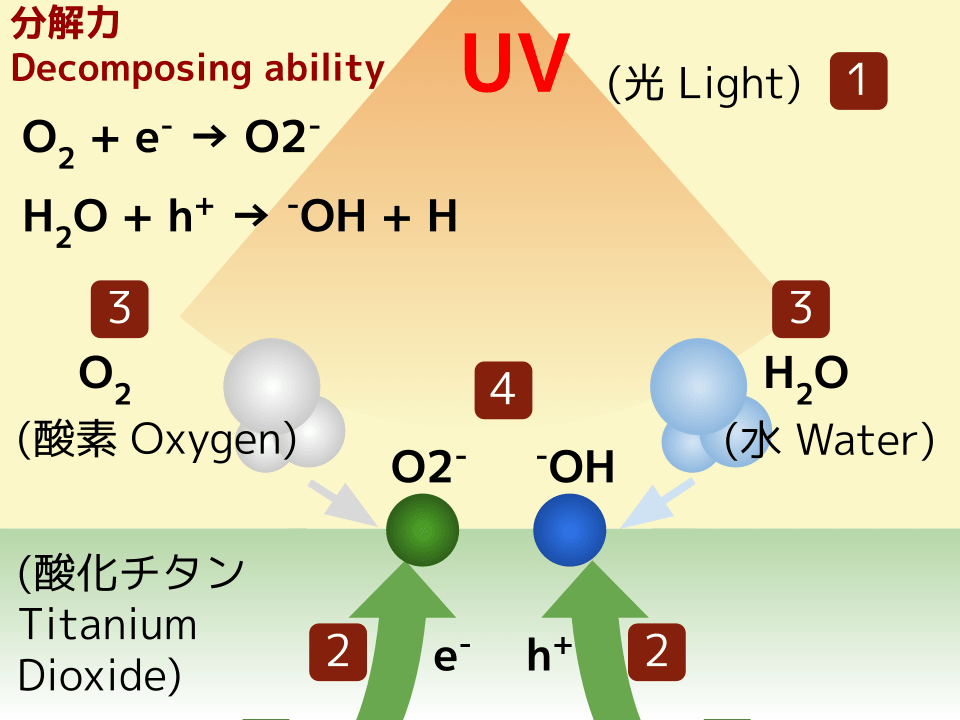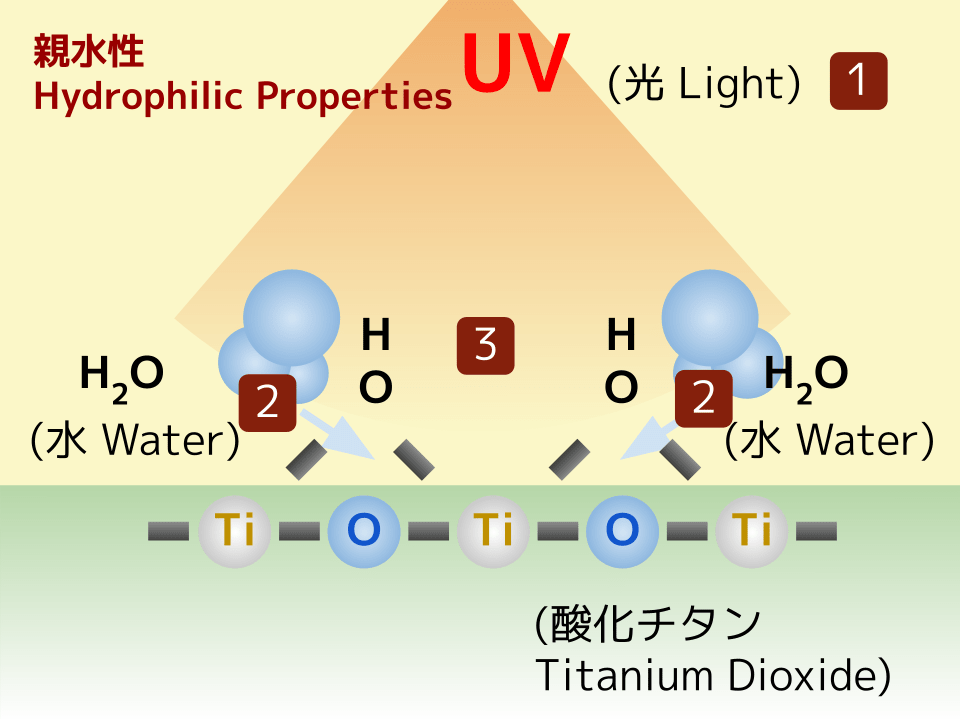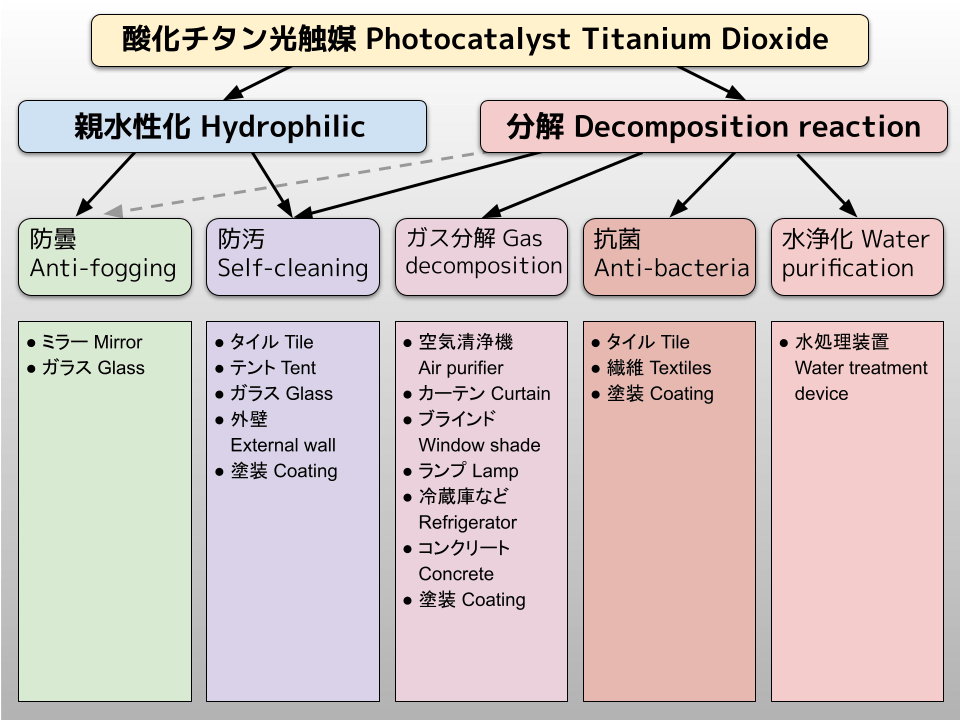Photocatalyst Introduction
What is a photocatalyst?
A photocatalyst is a material that functions as a catalyst (alters the rate of a chemical reaction) when exposed to light.
There are various materials that show photocatalytic capability, and titanium dioxide is said to be the most effective.
What is titanium dioxide?
Titanium dioxide is usually a white powder that is widely used as an ingredient of white pigment, white plastic and white paper. It is also used for cosmetic products since it absorbs ultraviolet light.
Titanium Dioxide Photocatalyst
Titanium dioxide photocatalyst is devised by slightly changing its crystal structure and converting it to fine powder in order to increase its photocatalytic capability.
It shows “decomposing ability” and “hydrophilic properties” upon exposure to ultraviolet light.
1. Decomposing Ability
As it can decompose various organic substances, it removes dirt and odors, as well as reduces the growth of germs.

- Titanium dioxide, which is the photocatalyst, is exposed to light.
- e–(electron) and h+(positive hole) are generated.
- Reactions between O2 contained in air and e–, H2O and H+ occur respectively.
- Two types of active oxygen, O2–(superoxide ion) and –OH(hydroxyl radical), are generated on the surface of the titanium dioxide.
2. Hydrophilic Properties
The surface easily becomes wet, so when rain water falls on it, the water goes under the dirt and suspends it, and as a result, the dirt can be washed off. There is also an anti-fogging effect.

- Titanium dioxide, which is the photocatalyst, is exposed to light.
- There is a reaction between one O (oxygen atom) in the composition of the titanium oxide and the H2O in the air.
- As a result of the O and H2O reaction, –OH (hydrophilic group), which is very hydrophilic, is generated on the surface of the titanium dioxide.
Usage of Photocatalyst Titanium Dioxide
Photocatalyst is used in products of various fields depending upon the effect, as shown in the figure below.

Photocatalyst and Light
Photocatalyst titanium dioxide must be used in places where it can be exposed to ultraviolet light. There is sunlight outside, but light from windows and lamp-light must be used indoors. There is generally little ultraviolet light indoors, so users must be careful. cf: Amount of Ultraviolet Light from Lamps
New Photocatalyst Titanium Dioxide
Recently, visible light responding photocatalysts, which function as catalysts absorbing purple or blue light with wavelengths longer than those of ultraviolet light, have been developed, and products applying this are available. Research to further widen the wavelength range and improve effectiveness is in active development.
Safety
Titanium dioxide itself is harmless and is used for various purposes such as in cosmetic products. Photocatalyst titanium dioxide is made from the same ingredients, so it is considered harmless at this time.
(As it is a fine particle in an oxidative form and used as a catalyst in chemical reactions, further confirmation tests regarding safety are being done continually.)
Environmental Effects
Photocatalyst titanium dioxide uses ultraviolet light contained in sunlight and lamp-light, so it is an environmentally-friendly material.